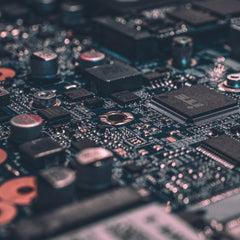The Internet of Things (IoT) has been developed with a centralized communication model as an integral part of its infrastructure. The cloud acts as the centerpiece for IoT communication, allowing devices to communicate, store and process data, and connect through the internet. However, cloud technology will be unable to sustain the sheer amount of data that is being processed with the growing IoT. Blockchain technology can be used to create a more decentralized communication model, helping alleviate the discrepancies of privacy, communication, and scalability for the IoT.
Cloud technology is great for introducing the power and potential deployments of IoT. In a TechCrunch article, the issues of future cloud applications are captured perfectly when author Ben Dickson states, “cloud servers will remain a bottleneck and point of failure that can disrupt the entire network.” The issue is that IoT ecosystems are expanding at an unprecedented rate; the resources that need to be allocated for maintaining the cloud will not be enough to nurture the growth of this technology. The cloud may be the IoT solution at this point in its development, but the costs and demands of processing that much data will become a nuisance. There needs to be an improved system for handling the heavy traffic of smart technology.
Blockchain technology is the answer the IoT industry has been searching for. Blockchain is a Machine to Machine (M2M) communication platform that enables devices to act as nodes and communicate with each other, removing the stress of storing everything in a central server. This innovative technology can help track and monitor the vast quantities of connected deices, allowing for devices to be able to coordinate their transactions directly with other devices. This can help cut down on the expenses of maintaining the enormous cloud networks and data centers.
One way to further understand the blockchain approach is to examine common network topologies. Utilizing the cloud as the centerpiece for IoT infrastructure is essentially creating a star network configuration. This means that each devices is acting as a node that is connected to a central device. The nodes cannot communicate directly; they can only communicate through the central device. The issue with this is that if there is a single point of failure, particularly the central device, the entire network goes down. Blockchain technology enables the network to resemble more of a mesh network configuration. This essentially means that every node is connected to each other and can communicate without going through a central device. This does create some redundancy within a network, but it this could be a more reliable solution for the IoT.
Decentralizing the communication model of the IoT can be an important step in establishing a reliable network for devices to operate within. The security of the IoT would also be improved due to the fact that there is no central point the information has to go through, removing the possibility of data being intercepted at the central device. Even though this technology is very promising, it does not come without problems. Setting up these networks is much more complex than setting up one that runs through the cloud. Once these networks are setup, there comes the issue of creating them on a scale where billions of devices can communicate directly with each other. The future of this technology is unclear due to these roadblocks, but the potential ability to have a seamless network with M2M communication is ideal for the development of the IoT.






